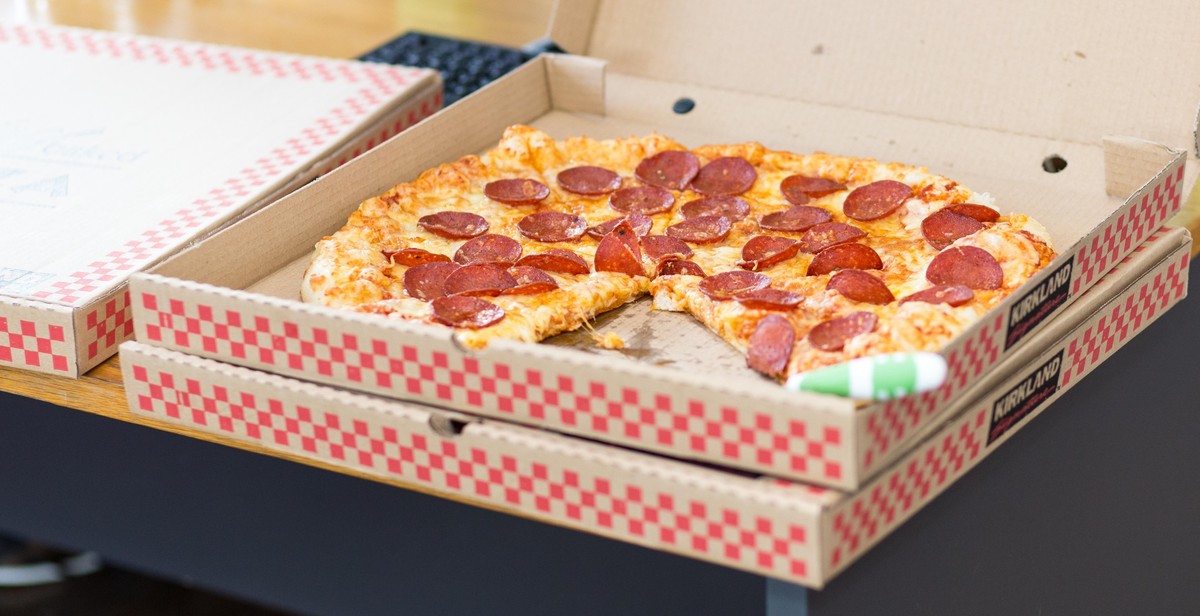Introduction
As technology continues to advance, the integration of robotics and artificial intelligence (AI) into various industries has become increasingly prevalent. One such industry that has seen a significant transformation is food delivery. With the advent of AI-powered drones and robots, the traditional methods of delivering food are being revolutionized, offering faster, more efficient, and contactless service.
Robots and drones are equipped with advanced sensors, cameras, and AI algorithms that enable them to navigate and interact with their surroundings autonomously. This technology has opened up new possibilities for food delivery, allowing businesses to streamline their operations and enhance customer experience.
AI-powered drones are capable of delivering orders directly to customers’ doorsteps, eliminating the need for human involvement in the delivery process. These drones can navigate through traffic and avoid obstacles, ensuring timely and accurate deliveries. Additionally, their compact size and ability to fly at various altitudes make them suitable for urban areas with limited space.
Robots, on the other hand, offer a different approach to food delivery. They can be designed to operate on sidewalks, delivering food to customers within a certain radius. These robots are equipped with temperature-controlled compartments to ensure food remains fresh during transportation. They are also equipped with AI algorithms that enable them to detect and avoid pedestrians and other obstacles.
Overall, the integration of robotics and AI into food delivery services has the potential to revolutionize the industry. It offers improved efficiency, reduced costs, and enhanced customer experience. In this article, we will explore the various ways in which AI-powered drones and robots are transforming the food delivery service.
The Rise of Robotics in Food Delivery
In today’s fast-paced world, the demand for quick and efficient food delivery services is on the rise. Traditional methods of food delivery, such as human-driven vehicles and bicycles, are often limited by traffic congestion and human error. In order to meet the growing demand and overcome these challenges, the food delivery industry is turning to innovative solutions, such as robotics and AI-powered drones.
The Need for Innovation in Food Delivery
The emergence of robotics in food delivery is driven by the need for innovation in the industry. Customers now expect their food to be delivered faster and with greater accuracy, while businesses strive to reduce costs and increase efficiency. This has created a perfect opportunity for the integration of robotics and artificial intelligence into the food delivery process.
The Emergence of AI-Powered Drones
AI-powered drones have emerged as a game-changer in the food delivery industry. These autonomous aerial vehicles are equipped with advanced navigation systems and sensors that allow them to safely and efficiently deliver food to customers’ doorsteps. With the ability to bypass traffic congestion and take the most direct routes, drones can significantly reduce delivery times and improve overall customer satisfaction.
The Role of Robots in Food Delivery
In addition to drones, robots are also playing a crucial role in transforming the food delivery landscape. These intelligent machines are capable of navigating through busy streets and delivering food to customers’ homes or offices. Equipped with advanced AI algorithms, robots can efficiently plan routes, avoid obstacles, and ensure timely deliveries. They can also carry multiple orders at once, further improving delivery efficiency.
Benefits of Robotics in Food Delivery
The integration of robotics in food delivery offers numerous benefits for both businesses and customers. Firstly, the use of robots and drones reduces the reliance on human labor, thereby cutting down on labor costs. Additionally, these technologies can operate 24/7, allowing for round-the-clock delivery services. The use of robotics also minimizes the risk of human error, ensuring accurate and timely deliveries. Furthermore, the reduced delivery times and increased efficiency result in improved customer satisfaction and loyalty.
In conclusion, the rise of robotics in food delivery is revolutionizing the industry. AI-powered drones and robots are overcoming the limitations of traditional delivery methods, offering faster, more efficient, and accurate food delivery services. As technology continues to advance, we can expect to see further innovations in this field, ultimately transforming the way we experience food delivery.

Challenges and Concerns
Safety and Reliability
As the use of AI-powered drones and robots for food delivery becomes more prevalent, safety and reliability are major concerns. Ensuring that these machines are equipped with advanced sensors and algorithms to navigate through various environments without causing harm to pedestrians or damaging property is crucial. The technology must be able to detect and avoid obstacles, respond to unexpected situations, and operate safely in different weather conditions.
Reliability is another crucial aspect, as any malfunction or failure during a delivery can lead to delays, customer dissatisfaction, and potentially damage the reputation of the businesses utilizing these technologies. Regular maintenance, thorough testing, and continuous improvement are necessary to ensure that the robots and drones operate reliably and efficiently.
Regulatory and Legal Hurdles
The integration of AI-powered drones and robots into the food delivery industry is accompanied by several regulatory and legal challenges. Many countries have strict regulations regarding the use of drones, including restrictions on flight altitude, speed, and airspace limitations.
Moreover, the legal framework surrounding liability in case of accidents or damages caused by these machines is still evolving. Determining who is responsible for any mishaps or injuries – the businesses deploying the robots, the manufacturers, or the operators – poses a significant challenge. Clear guidelines and regulations need to be established to address these concerns and ensure accountability.
Job Displacement
While the introduction of AI-powered drones and robots in the food delivery industry offers numerous benefits, it also raises concerns about job displacement. As these technologies become more advanced and widespread, there is a possibility of reduced employment opportunities for human delivery personnel.
However, it is important to note that automation in the industry can also create new job roles. For example, the need for technicians to maintain and repair the robots, software developers to improve the AI algorithms, and operators to monitor and control the machines will likely increase. Businesses and policymakers must find ways to address the potential impact on the workforce, such as retraining programs or creating new job opportunities in related fields.
In summary, the adoption of AI-powered drones and robots for food delivery comes with challenges related to safety and reliability, regulatory and legal hurdles, and job displacement. Addressing these concerns through technological advancements, well-defined regulations, and thoughtful workforce planning will be essential to ensure the successful integration of robotics in the food delivery industry.

Successful Implementations
Domino’s Pizza and Drone Delivery
Domino’s Pizza, one of the world’s largest pizza delivery chains, has successfully implemented drone delivery systems in certain locations. In partnership with drone delivery company Flirtey, Domino’s has been able to pioneer the use of AI-powered drones for food delivery. This innovative approach has allowed the company to deliver pizzas to customers’ doorsteps faster and more efficiently.
By leveraging drone technology, Domino’s has been able to overcome traditional delivery challenges such as traffic congestion and delivery delays. The drones are equipped with advanced AI algorithms that allow them to navigate through obstacles and reach their destinations in a timely manner. This not only improves customer satisfaction but also reduces operational costs for the company.
Starship Technologies and Robot Deliveries
Starship Technologies, a robotics company founded by Skype co-founders, has successfully implemented AI-powered robots for food delivery. These small, self-driving robots are designed to navigate sidewalks and deliver food orders directly to customers’ homes or offices.
Equipped with advanced AI capabilities, these robots can autonomously navigate through crowded streets and pedestrian areas, ensuring safe and efficient deliveries. They are also equipped with sensors and cameras that enable them to detect and avoid obstacles, ensuring a smooth delivery experience.
Through their successful implementation of AI-powered robots, Starship Technologies has been able to revolutionize the food delivery industry. Their robots have proven to be reliable, cost-effective, and environmentally friendly, making them an ideal solution for last-mile delivery challenges.
Amazon’s Prime Air Drone Delivery
Amazon, the e-commerce giant, has made significant strides in AI-powered drone delivery with their Prime Air program. The company has successfully conducted several pilot tests and is working towards implementing drone delivery on a larger scale.
With Prime Air, customers can expect their orders to be delivered within 30 minutes or less. The AI-powered drones are capable of flying autonomously and navigating complex airspace to reach their destinations. They are equipped with advanced AI algorithms that allow them to detect and avoid obstacles, ensuring safe and efficient deliveries.
By implementing AI-powered drones, Amazon aims to revolutionize the delivery industry by providing faster and more convenient service to its customers. This innovative approach not only enhances customer satisfaction but also streamlines Amazon’s logistics operations.
In conclusion, the successful implementations of AI-powered drones and robots by Domino’s Pizza, Starship Technologies, and Amazon’s Prime Air have transformed the food delivery industry. These innovative solutions have revolutionized last-mile delivery, improving efficiency, reducing costs, and enhancing customer satisfaction.

The Future of Robotics in Food Delivery
The future of food delivery is being revolutionized by advancements in robotics and artificial intelligence (AI). With the expanding market opportunities and the increasing demand for efficient and convenient food delivery services, robotics is set to transform the industry in numerous ways.
Advancements in Technology
Robots and AI-powered drones are equipped with advanced sensors and algorithms that enable them to navigate through complex environments and deliver food safely and efficiently. These technologies are constantly evolving, allowing robots to adapt to various terrains and weather conditions, making them reliable and versatile delivery partners.
Expanding Market Opportunities
The rise of online food delivery platforms and the growing preference for contactless delivery have created new market opportunities for robotics in the food industry. Restaurants and delivery companies are increasingly looking to invest in robotic solutions to meet the surging demand for fast and reliable food delivery services.
Enhanced Customer Experience
Robotics in food delivery ensures accuracy and timeliness, resulting in an enhanced customer experience. Robots and drones can deliver food orders with precision, eliminating the possibility of human errors and delays. Customers can enjoy hot and fresh meals delivered right to their doorstep, creating a seamless and satisfying experience.
Sustainability and Efficiency
Robotic food delivery systems contribute to a more sustainable and efficient future. By using electric-powered drones and robots, the carbon footprint associated with food delivery is significantly reduced. Additionally, robots are designed to optimize delivery routes, minimizing travel time and fuel consumption, thus making the process more environmentally friendly and cost-effective.
